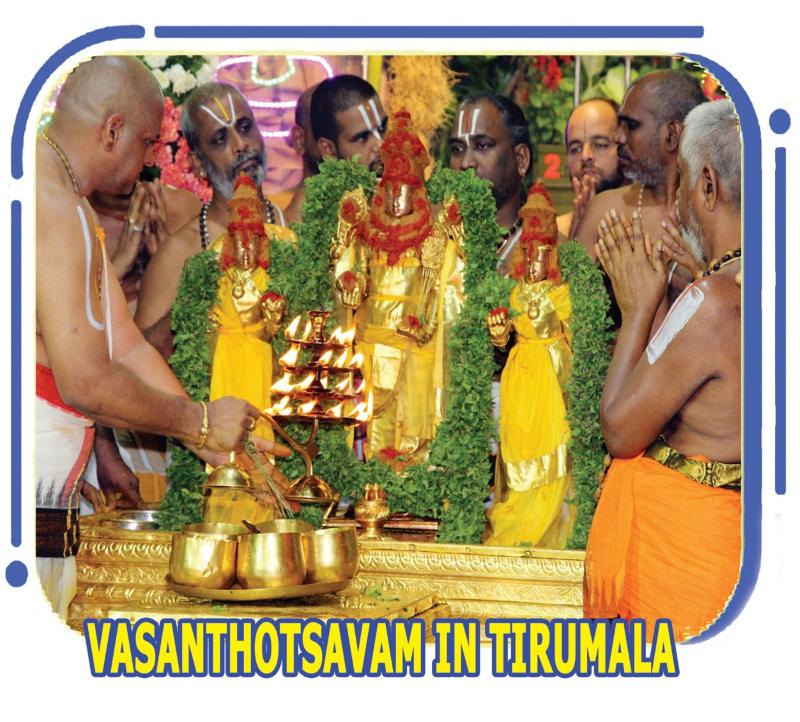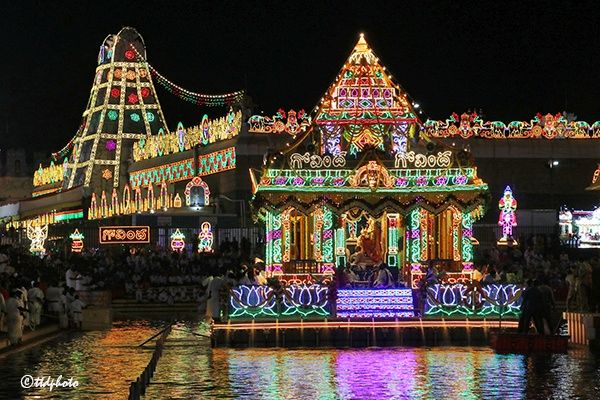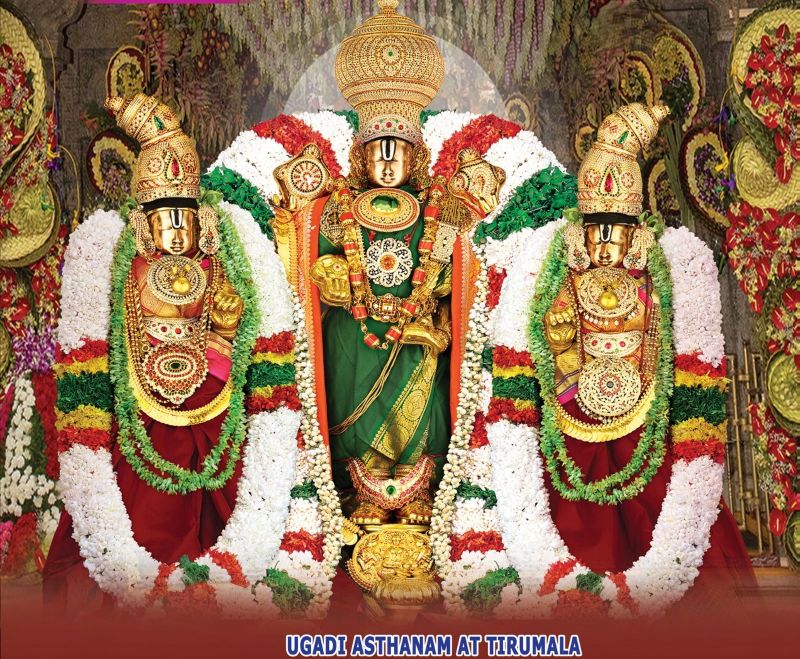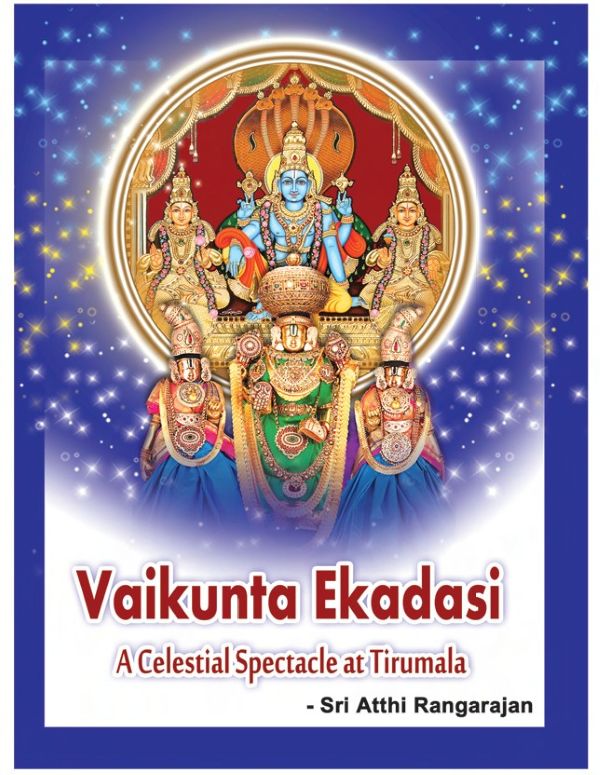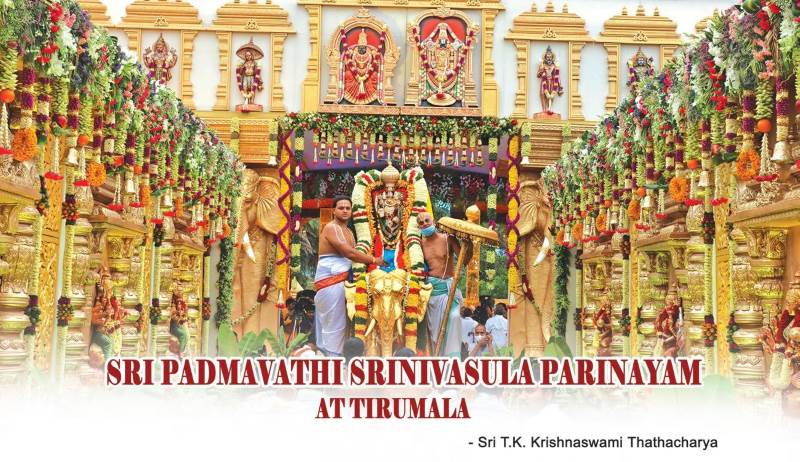Vasanthotsavam 2025 in Tirumala The three-day Vasanthotsavam festival is usually performed in Tirumala on the auspicious days of Trayodasi, Chaturdasi and Pournami in the month of Chaitra Masam (March/April) every year. This year, Vasanthotsavam will be held in Tirumala from 10-04-2025 to 12-04-2025. Tirumala is said to be cold, but the temperatures remain high in Read More
Category: Utsavam
The utsavas or Utsavams of the Lord held throughout the year can be divided into (i) Nityotsavas (daily ceremonies), (ii) Varotsavas (weekly ceremonies), (iii) Masotsavas (monthly ceremonies) and (iv) Varshikotsavas (annual ceremonies)
Teppotsavam 2025 at Tirumala
Srivari Salakatla Teppotsavam 2025 / Teppa Utsavam Srivari Salakatla Teppotsavam 2025 will be performed from 09.03.2025 to 13.03.2025. The Annual Float Festival (Teppotsavam) at Tirumala is performed in the Telugu month of Phalguna for five days. It begins on the day of Ekadashi and concludes with Pournima Day. The deities are taken around in specially decorated Read More
Ugadi Asthanam 2025
Tirumala Ugadi 2025 Festival: Special Pujas and Events Sri Maha Vishnu while descending on our planet from Vaikunta brought with him beautiful mountains, valleys and water bodies. In addition, he brought along his chief attendant Sri Garuda and other retinue. He has blessed Telugu land with his choice of place and made Tirumala as Vaikunta Read More
Vaikunta Ekadasi: Auspicious Day for Vishnu Devotees
What is Vaikunta Ekadasi? Meaning & Celebrations With Maha Lakshmi by His side, Sri Maha Vishnu reclining on the huge serpent bed of Adisesha in the milky ocean is a divine sight to behold. Reaching the Vaikunta Lokam and clinging to His lotus feet is the ultimate goal and purpose of one’s life. Mukkoti Ekadasi Read More
Padmavathi Parinayam: Lord Venkateswara & Goddess Padmavathi Wedding
Sri Padmavathi Parinayam at Tirumala Celebrating the wedding of the Aadhi Dampathi (Divine couple) Sri Lakshmi and Lord Narayana is a great event celestial since time immemorial. Indeed in every marriage ceremony of humans, the Divine couple are invoked so that the human marriages have the blessings of the Lord and the Goddess. The marriage Read More
Celebrations at Tirumala – Ugadi 2025
Tirumala Ugadi 2025 Festival: Special Pujas and Events Sri Maha Vishnu while descending on our planet from Vaikunta brought with him beautiful mountains, valleys and water bodies. In addition, he brought along his chief attendant Sri Garuda and other retinue. He has blessed Telugu land with his choice of place and made Tirumala as Vaikunta Read More
Matsya Jayanti 2025: Auspicious Day for Devotees
Matsya Jayanti: Celebrating the First Avatar of Vishnu On the occasion of Matsya Jayanti 31-03-2025 According to the Matsya Purana, once upon a time, there was a king called Manu who left his kingdom and went to the Malaya country to perform penance. Lord Brahma was pleased and gave him the boon that he would Read More
Surya Jayanthi in Tirumala 2025
Surya Jayanthi – Rathasapthami The celebrations of Surya Jayanthi in Tirumala are being held in a grand style on the day of the ‘Rathasapthami’ festival every year. On that day, from sunrise to the end of the night, the Lord of the Seven Hills will visit the devotees in seven vehicles. On that day, Lord Read More
Paruveta Utsavam in Tirumala 2025
Paruveta Utsavam On the Kanuma festival day, Paruveta Utsavam is held in Tirumala every year. On this day, the processional deities of Lord Sri Malayappa Swamy and Lord Sri Krishna Swamy, seated on separate palanquins, are taken for a pleasure hunt to Paruveta Mandapam in Tirumala from the main shrine in a colourful procession. On Read More
Pranaya Kalaha Mahotsavam at Tirumala 2025
Lord Venkateswara is the most powerful God attracting lakhs of people to His Abode. There are several festivals in Tirumala Temple to witness: daily, weekly, monthly and yearly. Of those festivals, Brahmotsavam, Ugadi Asthanam, Anivara Asthanam, Deepavali Asthanam, Adhyayanotsavam, Pranaya Kalaha Mahotsavam etc. are annual festivals. Pranaya Kalaha Mahotsavam in Tirumala on 15.01.2025 Pranayakalahotsavam / Pranaya Kalaha Read More
